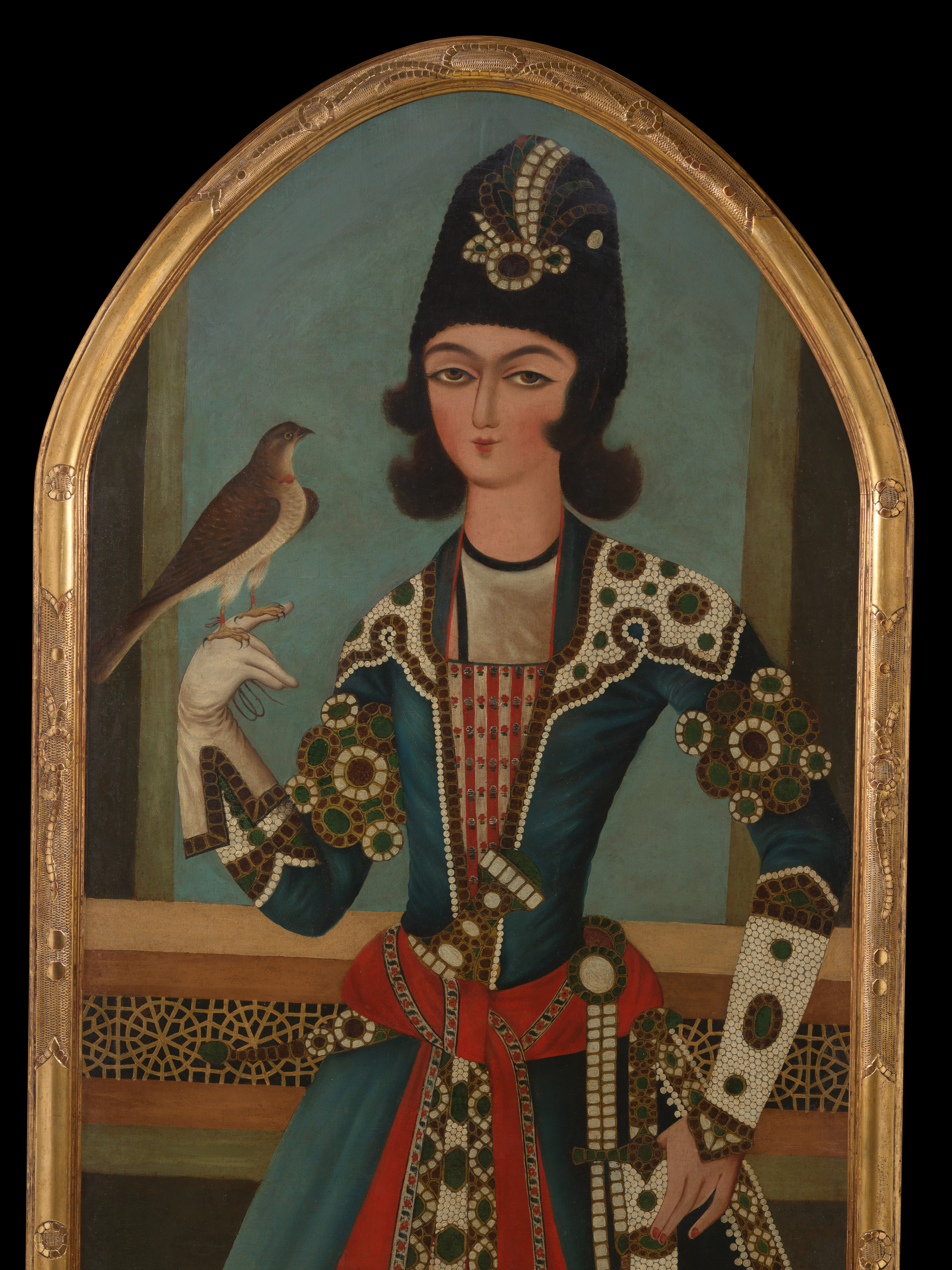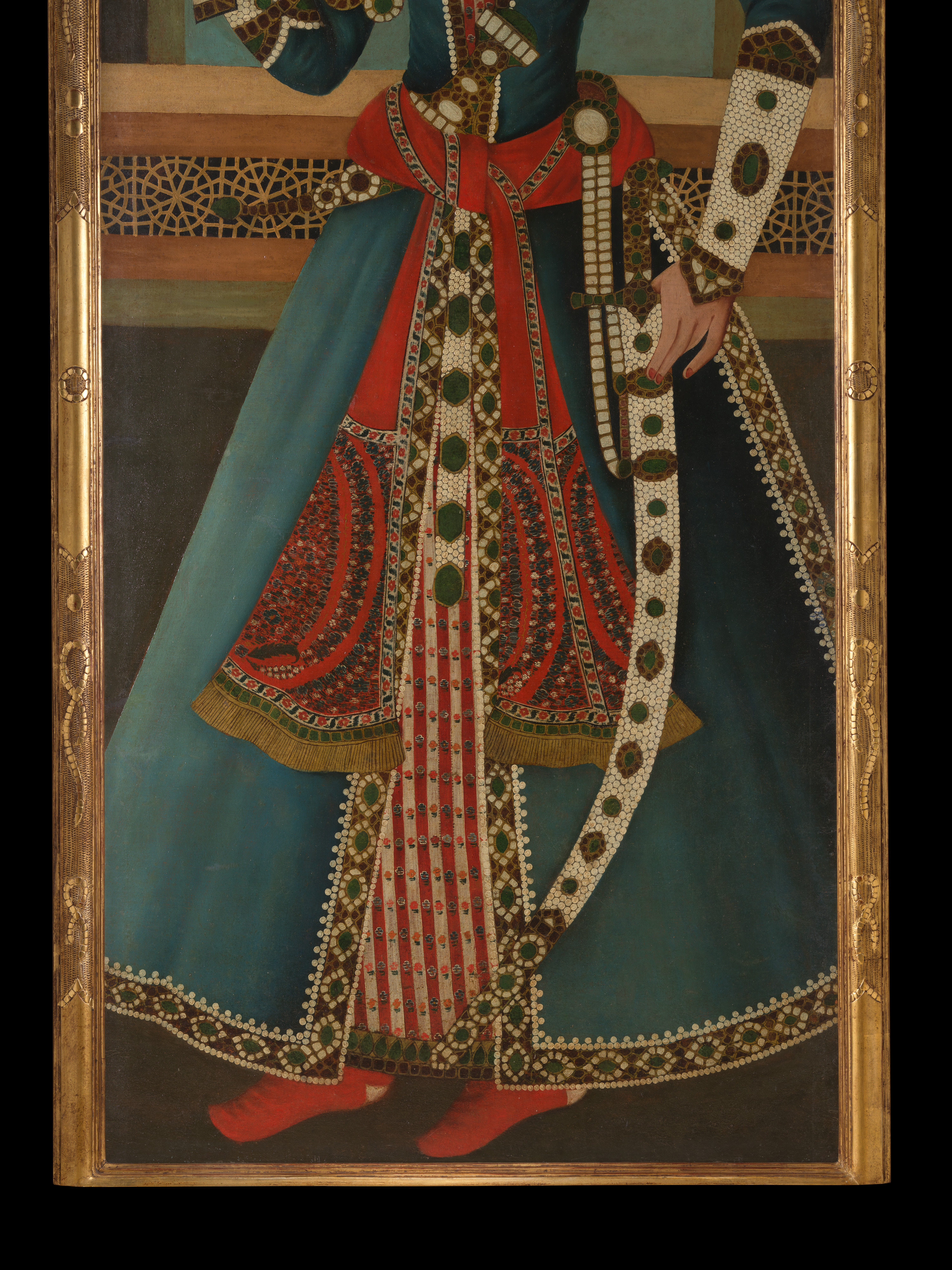Prince Holding a Falcon
The arch shape of this painting suggests it was intended for a niche in an architectural setting, probably a palace or pavilion, where it would have been displayed as part of a larger decorative program along with other portraits of the ruler, princes, and other court members. Typical of Qajar lifesize oil portraits from the first quarter of the nineteenth century, it shows the prince standing in front of a window with a pierced wooden balustrade. The background is undecorated in order to accentuate the opulence of the his costume and accoutrements. Based on the treatment of the textiles, jeweled elements, palette, and articulation of the facial features, the portrait can be related to two signed paintings of princes by the artist Muhammad Hasan, one of the foremost portrait artists during the reign of Fath ʽAli Shah Qajar (reigned 1797–1834). Here, the prince wears a jewel-studded robe and red sash with paisley designs, carries a sword with a bejeweled sheath, and dons a black astrakhan hat with a jeweled aigrette. Touching the saber sheath with one hand, he holds a falcon with the other. Falconry, the privileged sport of royalty and nobility in Iran for centuries, was enjoyed by numerous Qajar princes.
Due to rights restrictions, this image cannot be enlarged, viewed at full screen, or downloaded.
This artwork is meant to be viewed from right to left. Scroll left to view more.








